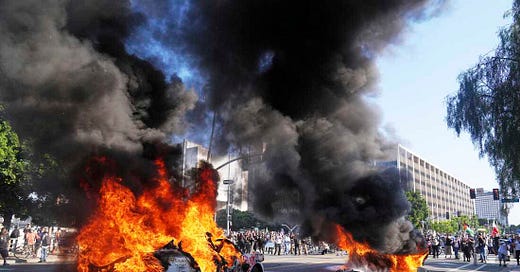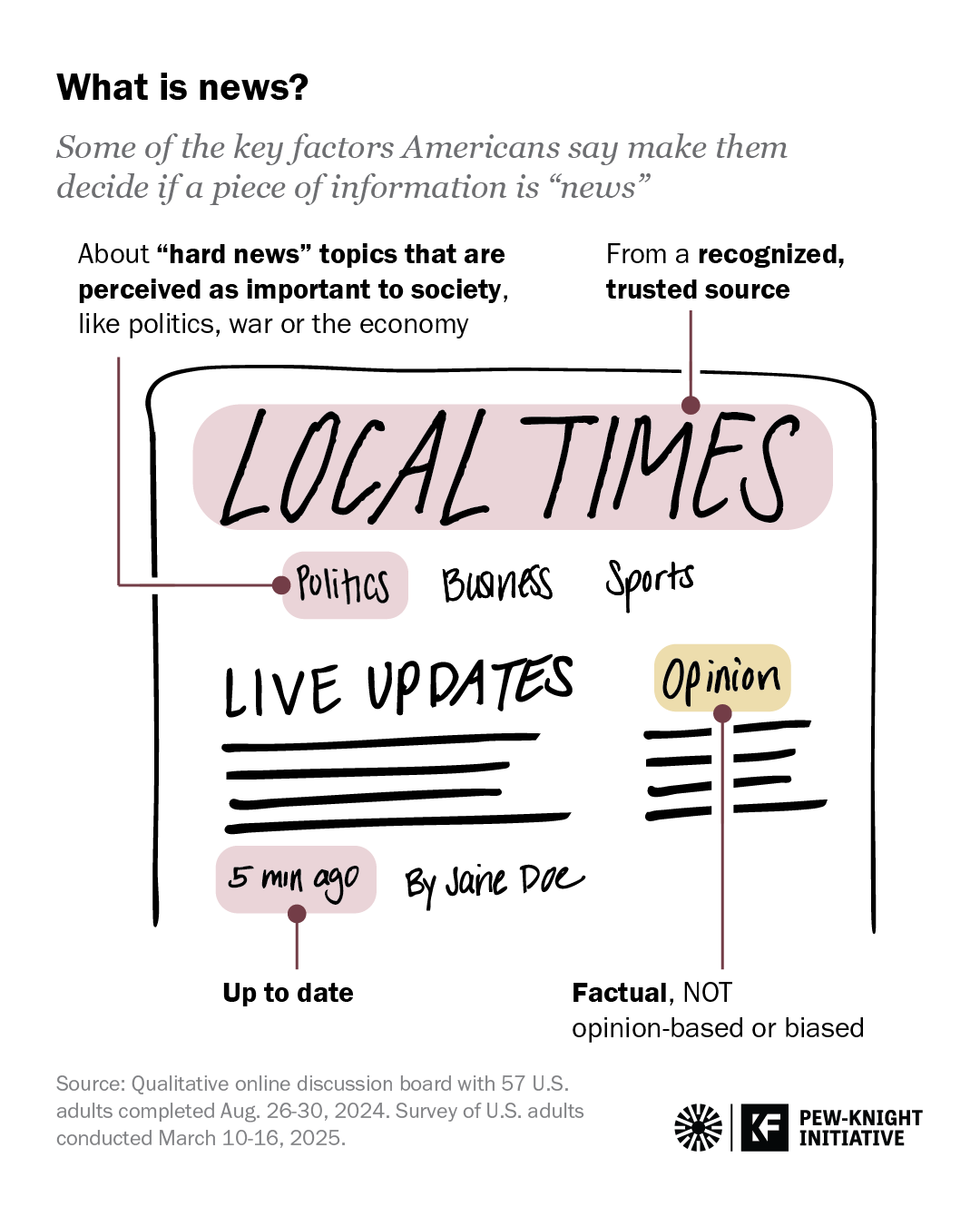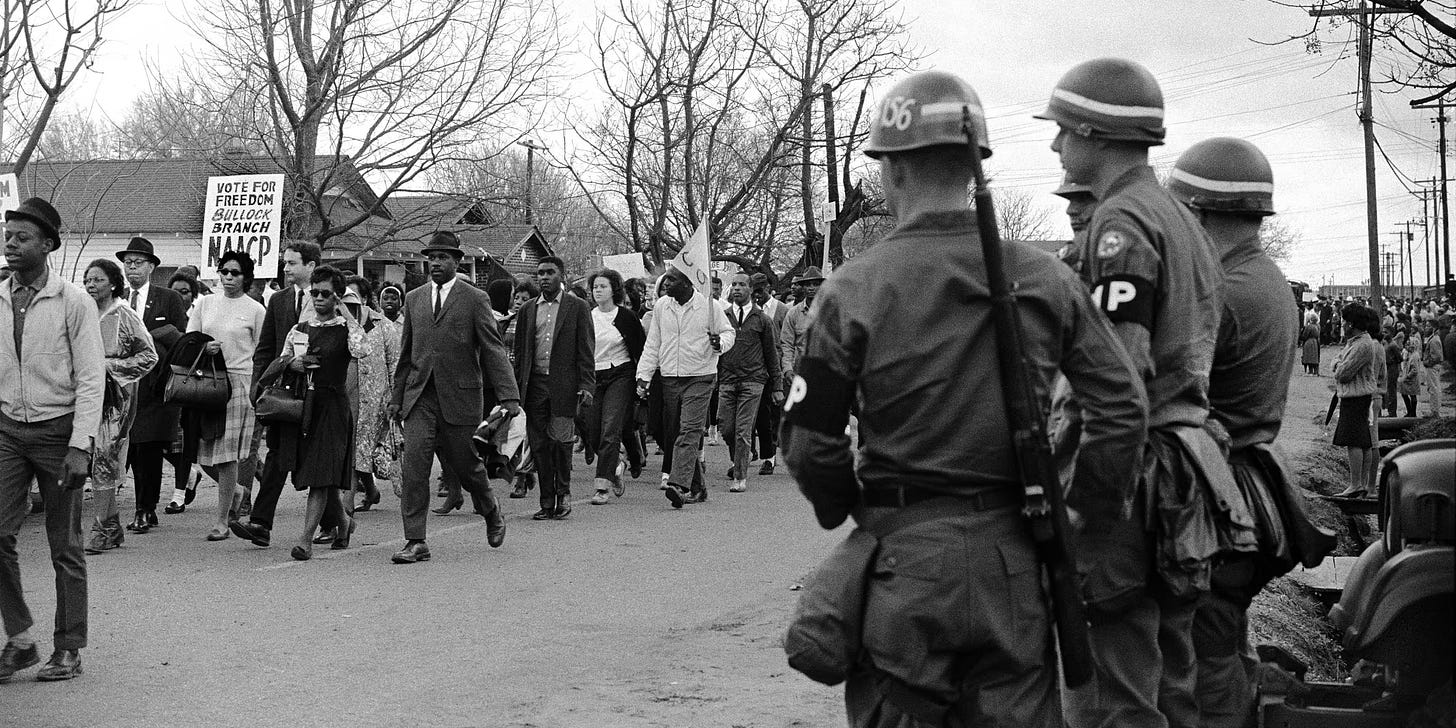Today's issue is sponsored by Pew Research Center
When President Donald Trump ordered 2,000 National Guard troops and 700 Marines to Los Angeles this week, he wasn't just responding to violent protests over immigration raids. He was threatening the use of military force against American citizens in alarming and rarely tested ways. And it could just be the beginning.
The troop deployment follows a pattern in Trump's presidency: declaring emergencies or crises where others see manageable situations and then using those declarations to justify sweeping unilateral actions. Trump has already declared eight separate emergencies since taking office — far more than other recent presidents.
They include an economic emergency declared to justify global tariffs even though US trade deficits have been around for decades; an energy emergency declared to justify new oil and gas leasing and the rollback of environmental regulations, despite healthy domestic supplies; and a fentanyl emergency at the Canadian border declared to justify tariffs on our northern neighbor, despite minimal drug flow from that direction. These declarations granted him extraordinary powers to bypass normal government processes and congressional oversight.
The immediate trigger in Los Angeles was clear enough: after Immigration and Customs Enforcement agents swept through places like Home Depot parking lots and clothing manufacturers, arresting day laborers and factory workers, protesters took to the streets.
What began as peaceful demonstrations quickly turned violent, with windows shattered, self-driving cars set ablaze, and officers pelted with rocks and electric scooters. Police responded with flash-bangs and rubber bullets, and Los Angeles declared an "unlawful assembly."
The central question isn't whether violent protesters deserve consequences — they do. By any measure, violence against federal agents is inexcusable, and law enforcement has every right to protect personnel and property.
But the broader context of the military deployment suggests something more calculated than crisis response. The president could be provoking a crisis through harsh immigration raids and then using the predictable protests as justification to deploy the military against the wishes of local authorities. And, he’s already suggesting he plans to continue this practice.
Stoking the fire
The Los Angeles immigration raids were a dramatic departure from traditional enforcement measures, amid Trump's frustration that deportation numbers have fallen short of his promises. ICE ramped up its enforcement actions after White House Deputy Chief of Staff Stephen Miller demanded last month that it make 3,000 arrests a day, compared with a few hundred during Trump's first 100 days. For much of that period, deportations were on par with, and at times below, those recorded during the last year of Joe Biden's presidency.
Rather than targeting violent criminals, as the administration has suggested it is focusing on, ICE agents swept up anyone they could. Six migrants who witnessed the Home Depot raid told The Washington Post that "federal immigration authorities began handcuffing anyone they could grab" in seemingly arbitrary detentions. The agents dressed like commandos and wore skull and skeleton gear.Even some Trump supporters expressed concern. The co-founder of Latinas for Trump, Florida State Senator Ileana Garcia, wrote on X that "this is not what we voted for," criticizing "arbitrary measures to hunt down people who are complying with their immigration hearings… all driven by a Miller-like desire to satisfy a self-fabricated deportation goal."
Trump's decision to deploy military forces did not come at the request of local authorities struggling to maintain order, but over their explicit objections. California Governor Gavin Newsom, who was not consulted, said Trump had ordered “soldiers to engage in unlawful civilian law enforcement activities in communities across the region, beyond just guarding federal buildings,” and filed a lawsuit to immediately block the troop deployment. (A federal judge denied the request and scheduled a hearing for Thursday.)
California employs more than 75,000 uniformed law enforcement personnel, and Los Angeles alone has nearly 9,000 police officers. Los Angeles Police Chief Jim McDonnell, who worked his way up through the LAPD ranks over 29 years and previously led the largest sheriff's department in the United States, said his department remained "confident in our ability" to handle the demonstrations.
But Trump's own comments suggested he was indifferent to local capacity and would judge by his own standard. "Looking really bad in L.A.," he posted on Truth Social. "BRING IN THE TROOPS!!!" When asked about the threshold for deploying Marines, Trump replied: "The bar is what I think it is."
From Pew Research Center:
A new Pew Research Center analysis from the Pew-Knight Initiative explores: What is “news” to Americans – and what isn’t?
Several journalists and editors we interviewed felt that in the digital age, the power to define news has largely shifted from media gatekeepers to the general public. In an online discussion board, participants acknowledged that their personal identities influence how they consume or think about news.
And our survey of U.S. adults shows that people’s definition of news includes whether something is factual or important to society.
Explore the full report here!
Constitutional crisis in the making
The Posse Comitatus Act of 1878 generally prohibits domestic military deployment, but Trump justified his action by invoking a rarely used provision of another law from the 1800s — the Enforcement Act — that allows federal control of National Guard troops during “rebellion or danger of rebellion."
The deployment marks only the second time in nearly 60 years that a president has called up National Guard troops over a governor's objections. The last instance was in 1965, when President Lyndon Johnson sent troops to protect civil rights marchers in Alabama — using federal power to defend the Constitution against segregationist state resistance.
Trump's action, on the other hand, uses federal force to override state sovereignty for the sake of his administration’s immigration agenda.
More ominously, White House officials, including Miller and Vice President JD Vance, have repeatedly used the term "insurrection" to describe the protests. They appear to be laying the groundwork for the Trump administration to invoke the Insurrection Act, which would allow active-duty military forces to conduct law enforcement operations on American soil. Trump himself has called protesters "insurrectionists," though when pressed, he acknowledged, "I wouldn't call it quite an insurrection, but it could have led to an insurrection."
A dangerous precedent
The military deployment reveals fundamental problems with using federal troops for domestic law enforcement — and raises deeper concerns about the politicization of the armed forces. As retired Army Lieutenant General Russel Honoré, who led the Army's efforts after Hurricane Katrina, explained, "Marine infantry units focus on lethal force as opposed to less-than-lethal force, so they are typically not trained or equipped to deal with civil disturbances." As a result, they can lack the "police mindset" of de-escalation and minimum force.
History underscores these dangers. During the 1992 Los Angeles riots, California requested the federal government’s help. But miscommunication between Marines and police nearly turned tragic when different tactical protocols led to a squad of Marines opening fire on a house during a domestic dispute, leaving over 200 bullet holes but no casualties.
With federal and local officials opposed rather than coordinating this time, we may not be so fortunate. John Miller, formerly a deputy commissioner of intelligence and counterterrorism for the New York Police Department and an assistant director of the FBI, raised a chilling question: without proper coordination and clear rules of engagement between federal and local authorities, "are we two bad judgment calls away from Kent State?" — a reference to the 1970 incident when Ohio National Guard troops fired into a crowd of student protesters, killing four and wounding nine.
A larger strategy?
Trump's memo authorizing the deployment is written in sweeping terms that suggest a nationwide mobilization. It authorizes military troops to protect federal functions anywhere protests are occurring, or — most troublingly — "are likely to occur based on current threat assessments."
This preemptive authorization for military deployment against anticipated protests represents an expansion of presidential power that might presage things to come. Writing for The Atlantic, David Frum (who worked for President George W. Bush) warns that the Los Angeles deployment could serve as a “dress rehearsal” for broader expansion of federal powers. He says that Trump's actions fit a troubling pattern that could unfold ahead of the 2026 midterm elections: "Use federal powers in ways to provoke some kind of made-for-TV disturbance — flames, smoke, loud noises, waving of foreign flags. Invoke the disturbance to declare a state of emergency and deploy federal troops. Seize control of local operations of government — policing in June 2025; voting in November 2026."
That might sound alarmist, but it’s worth remembering that Trump hesitated to deploy military force in his first term during the January 6 riot, when the Capitol was under attack by his own supporters, whose crimes he has pardoned. Now, when protesters oppose his immigration policies, he immediately sends troops. Trump himself repeatedly told supporters during last year's election campaign that if reelected he would use the military against "the enemy within,” a label he has applied to his domestic political opponents.
Seen in that light, Trump's Los Angeles experiment could presage a fundamental test of whether America will remain a nation where military force serves lawful civilian authority or become one where civilian authority manipulates military force for political gain.











